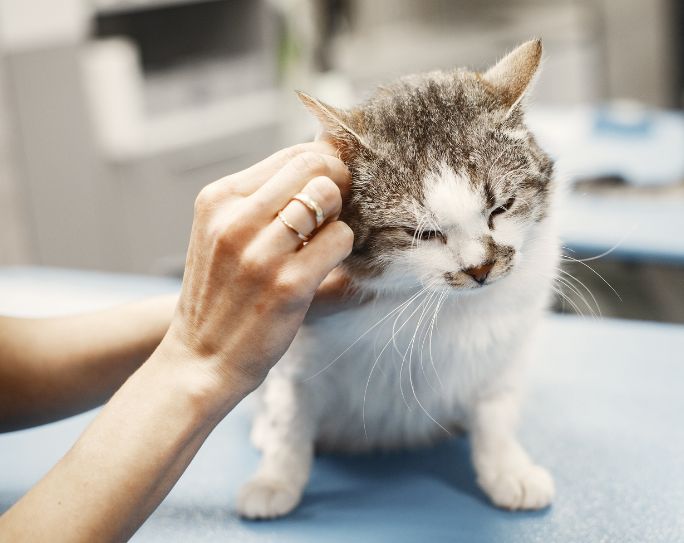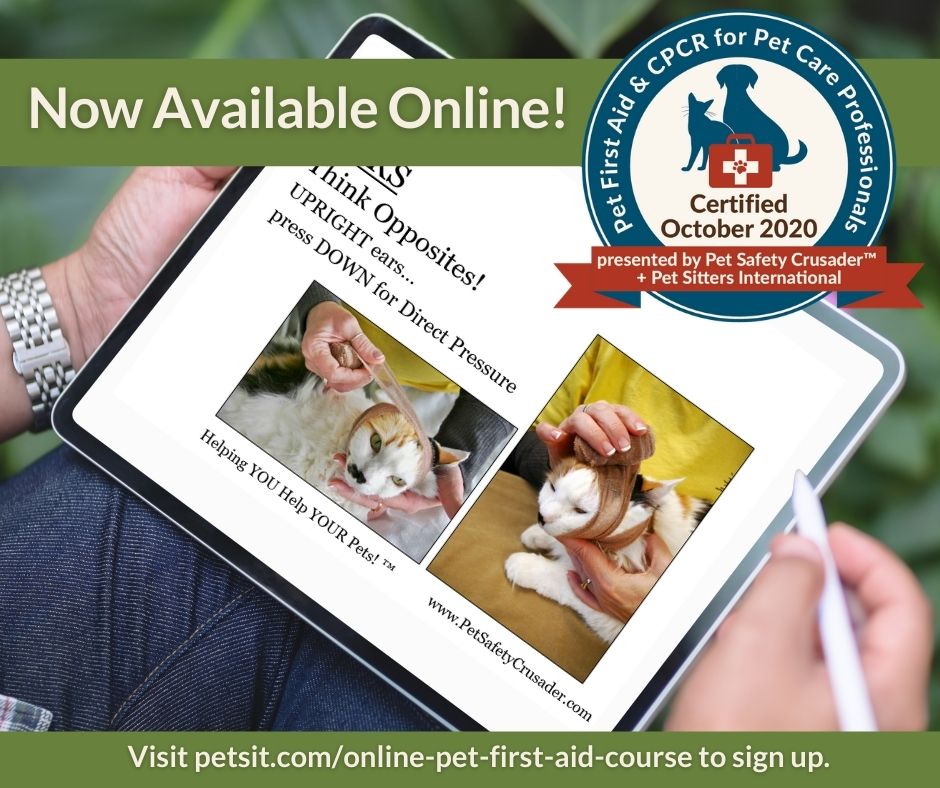Items you need in your pet first aid kit
PSI Staff | Updated April 2022

Just like human accidents, most pet accidents happen in or nearby the home. Examples of the most common pet accidents include toxic ingestion, dog bites, high rise syndrome, ripped toenails, foreign body ingestions with gastrointestinal problems, eye emergencies, broken bones, trouble giving birth and being hit by a car.
As a pet sitter or dog walker, it's very possible you will encounter at least one of these situations during your pet-sitting career. One way to be prepared is to have a pet first aid kit and make sure it is readily available to you while you're pet sitting. Many pet sitters keep their pet first aid kit in the back seat or trunk of their vehicle.
Because your pet-sitting visit requests were likely down the past year due to the pandemic, you may not have thought to check your pet first aid kit. Now is a good time—as you prepare for more pet-sitting requests in the next few months—to make sure you have everything you need in your pet first aid kit, and that all your supplies are up to date.
An article in a previous issue of PSI's Pet Sitter’s World magazine offered these suggestions for your pet first aid kit, provided by Pet Poison Helpline®.
Dog and Cat Pet First Aid Kit contents:
- Hydrogen peroxide 3% (within the expiration date)
- An oral dosing syringe or turkey baster (for administering hydrogen peroxide)
- Teaspoon/tablespoon set (to calculate the appropriate amount of hydrogen peroxide to give)
- Liquid hand dish washing detergent (i.e., Dawn, Palmolive)
- Rubber gloves
- Triple antibiotic ointment with NO other combination ingredients (NOT for use in CATS!)
- Vitamin E oil
- Diphenhydramine tablets 25 mg (with NO other combination ingredients)
- Ophthalmic saline solution or artificial tears
- Can of tuna packed in water or tasty canned pet food
- Sweet electrolyte-containing beverage
- Corn syrup
- Vegetable oil
Pet Safety Crusader™ Denise Fleck shares this advice: "Hydrogen peroxide must be fresh and bubbly to induce vomiting in dogs, but the latest protocol is NEVER induce vomiting in cats. Get quickly to your veterinarian. Peroxide can inflame the feline stomach."
Based on recommendations from the American Veterinary Medical Association (AVMA), you should also consider including these additional items:
- Gauze
- Nonstick bandages (or towels/cloth strips)
- Adhesive tape for bandages (Do not use human adhesive bandages.)
- Milk of Magnesia
- Digital thermometer
Having an extra leash in your kit is also a good idea, and make sure that you always have the phone numbers for your veterinarian and the local emergency veterinary clinic handy. You should also be sure to have information about your clients’ vets readily available.
Denise Fleck also offers this tip: "No matter your age, consider adding a pair of reading eye glasses or a magnifying glass. Some instruction labels are so doggone tiny and/or fleas and ticks can be missed if we don't have a visual aid!"
Remember, before you attempt anything with your new pet first aid kit, it is always important to speak with a poison control specialist before you try any therapies at home. You will never want to administer the hydrogen peroxide to a pet without checking with a veterinary professional first. In some situations, it is not appropriate to induce vomiting at home. You should also never administer over-the-counter human medications to pets without first speaking to a toxicologist or veterinary professional.
One helpful resource is the Pet Poison Helpline: 1 (855) 764-7661 or www.petpoisonhelpline.com.
According to the American Animal Hospital Association (AAHA), 25 percent more pets would survive if just one pet first aid technique were applied prior to getting emergency veterinary care.
After you’ve administered first aid, it is still extremely important to seek veterinary care as soon as possible. Many emergencies cannot be managed—even in the initial period—with simple pet first aid procedures. Call your veterinarian (or, if pet sitting, the client’s veterinarian), an emergency veterinary center or poison control immediately—and remember, above all, to STAY CALM.
As you check your pet first aid kit, consider reaching out to your clients to encourage them to do the same. Include this information on supplies you need for a pet first aid kit in an email to your clients or share it on your company's social-media pages to reach even more pet parents.
Share your thoughts in the comments below!
We'd love your feedback! Are there any other items you recommend including in your pet first aid kit? How often do you restock your kit? Do you carry your pet first aid kit with you to each visit, or do you ask your clients to have their pet first aid kit readily available?








Comments
Sarah Sweet
Sarah Sweet
Stephanie Glover
Jack Ellis
F6 Adhesive Tape
I have a question about Adhesive Tape Is it safe for using my pet's body?
John Wrobel
I'm a new member. So glad That I joined. Lot's of great information.
Cathryn Haynes